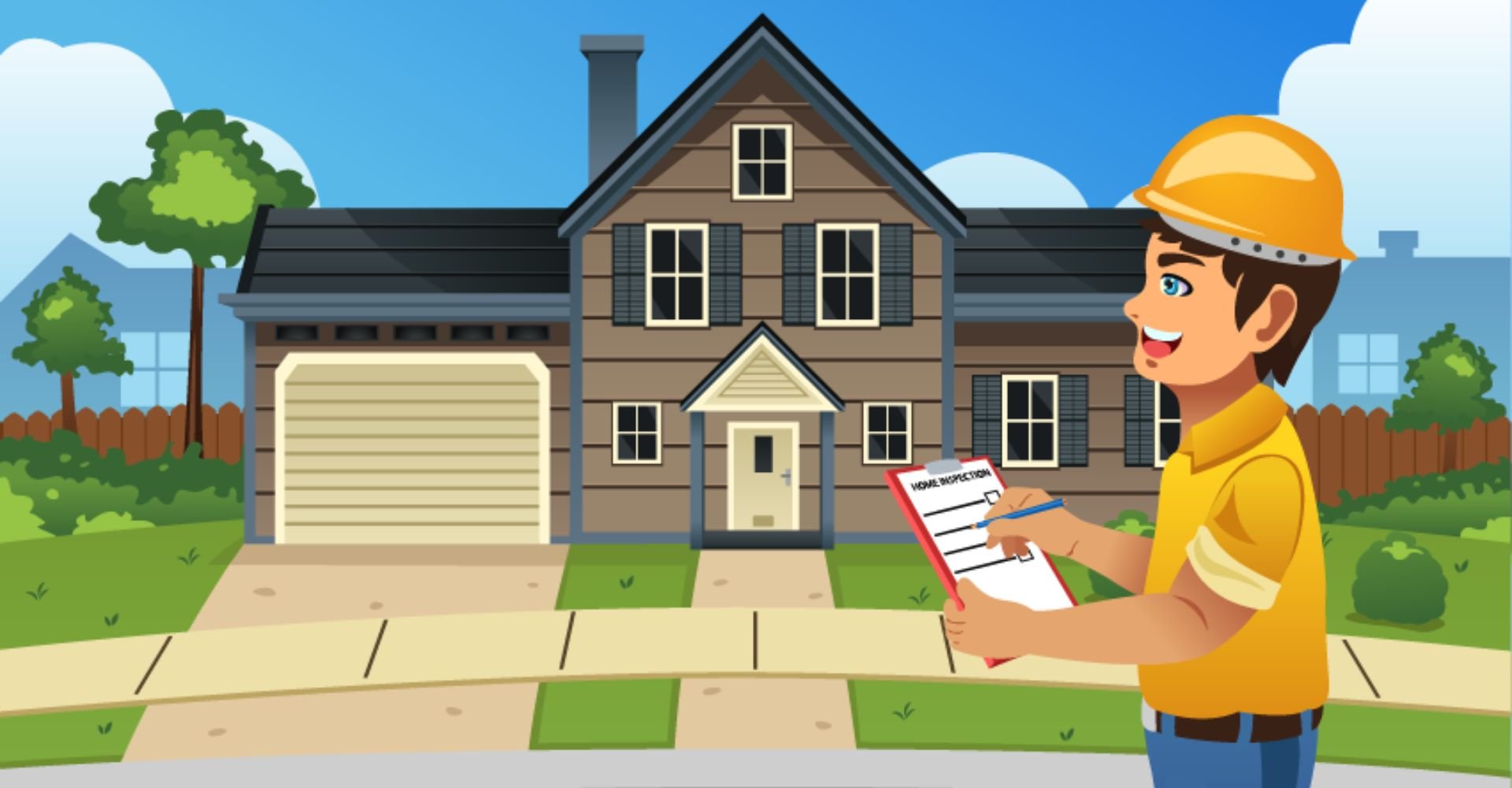Buying a home is one of the most significant investments you’ll make in your lifetime.
To ensure that your investment is sound and free from hidden surprises, a home inspection is a crucial step in the home-buying process.
But what exactly happens during a home inspection, and what should you expect?
In this comprehensive guide, we will delve into the intricacies of home inspections, exploring what inspectors look for, common issues uncovered, and the costs associated with potential repairs.
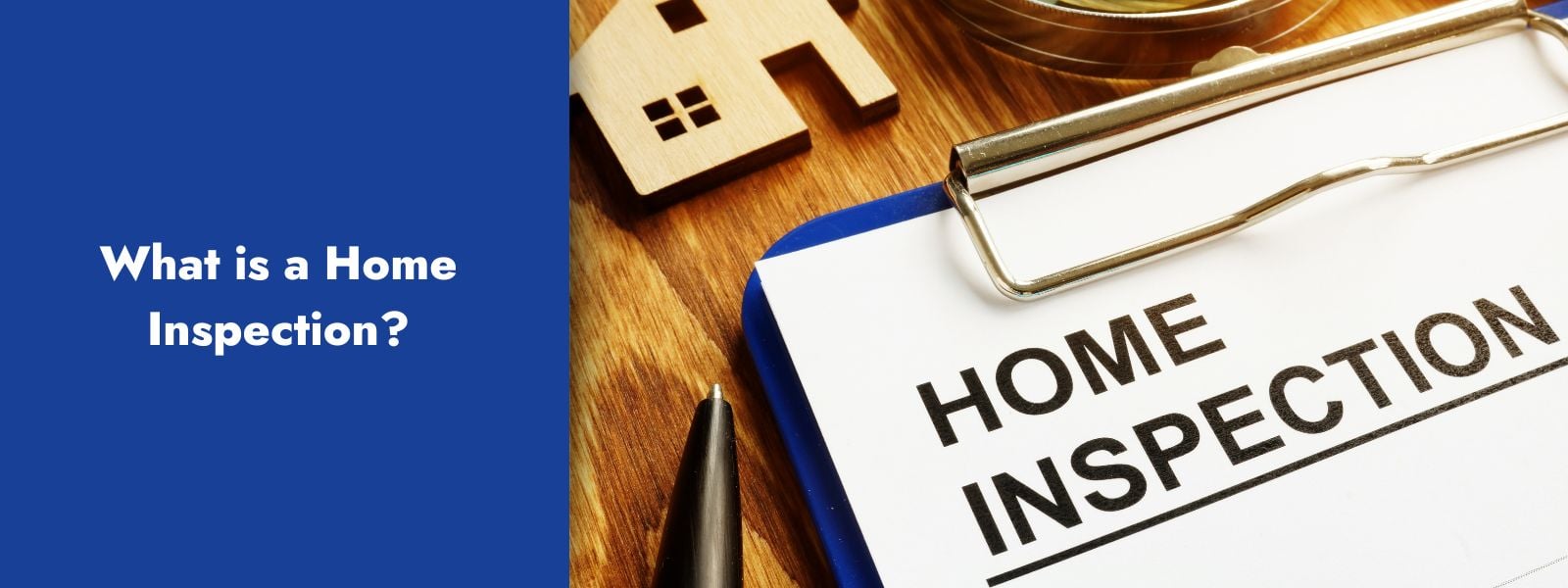
What is a Home Inspection?
A home inspection is an indispensable part of the home-buying process, offering potential buyers an intricate evaluation of a property’s condition. Certified home inspectors ensure an impartial assessment, as their allegiance lies solely with the truth, not with the buyer or seller.
The process of a home inspection kicks off by scrutinizing the property’s exterior, then gradually progresses through the home’s interior, including the basement, attic, kitchen, bathrooms, and all other critical areas. This methodical approach uncovers problems and potential hazards, equipping buyers with the knowledge they need to make informed decisions about their investment.

What Happens During a Home Inspection?
A home inspection involves a thorough examination of the property’s vital components. It is a meticulous process that leaves no stone unturned. Inspectors traverse from the outside in, scrutinizing every aspect of the property.
The objective of a home inspection is to unearth any hidden issues or potential pitfalls that may affect the property’s value or safety. By proactively seeking out problems, inspectors provide buyers with a clear and detailed picture of the property. This enables buyers to make well-informed decisions about the purchase.

What Do Home Inspectors Look for During an Inspection?
Home inspectors are trained to identify problems and potential hazards. They employ a systematic approach when conducting their assessments. Let’s delve deeper into what home inspectors concentrate on during an inspection:
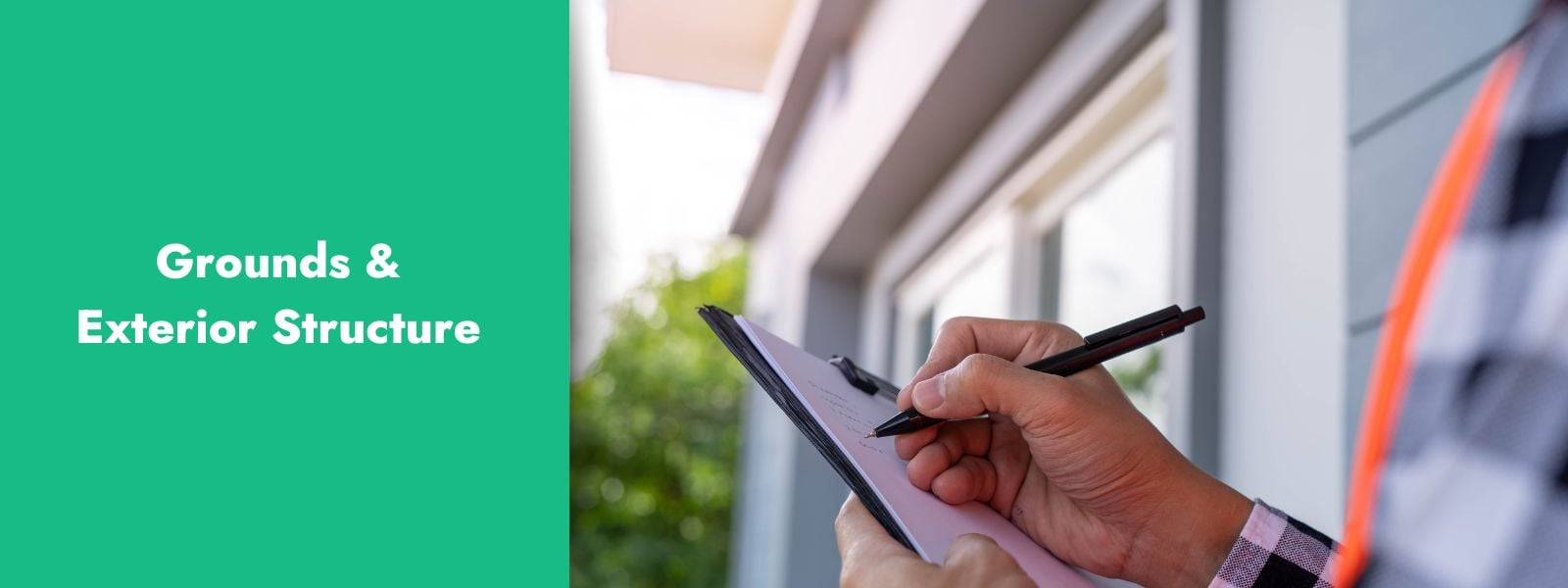
Grounds & Exterior Structure
The inspection often begins with the property’s exterior. Inspectors assess the condition of the grounds, including the landscaping, drainage, and the integrity of driveways and walkways. They also closely examine the foundation, walls, and siding of the house, looking for signs of damage or structural issues.
Home inspectors employ their keen eye to scrutinize the property’s grounds and exterior structure. They look for telltale signs of drainage problems, grading issues, or potential threats to the property’s foundation. For instance, they may identify cracks in the foundation, signs of wood rot on siding, or structural concerns in retaining walls.
Common Issues and Costs:
Repairs to the exterior can vary widely in cost. Minor landscaping issues might only cost a few hundred dollars to address, while foundation repairs can run into thousands or even tens of thousands of dollars, depending on the extent of the damage.
- Cracked foundation: Repair costs can range from $2,000 to $15,000+ or more, depending on severity.
- Damaged siding: Repairing damaged siding can cost around $352 to $1,431 for an average-sized home.
- Retaining wall issues: Repairing a retaining wall can range from $100 to $1,500, while removing and replacing a retaining wall will cost $6,000 to $14,000.
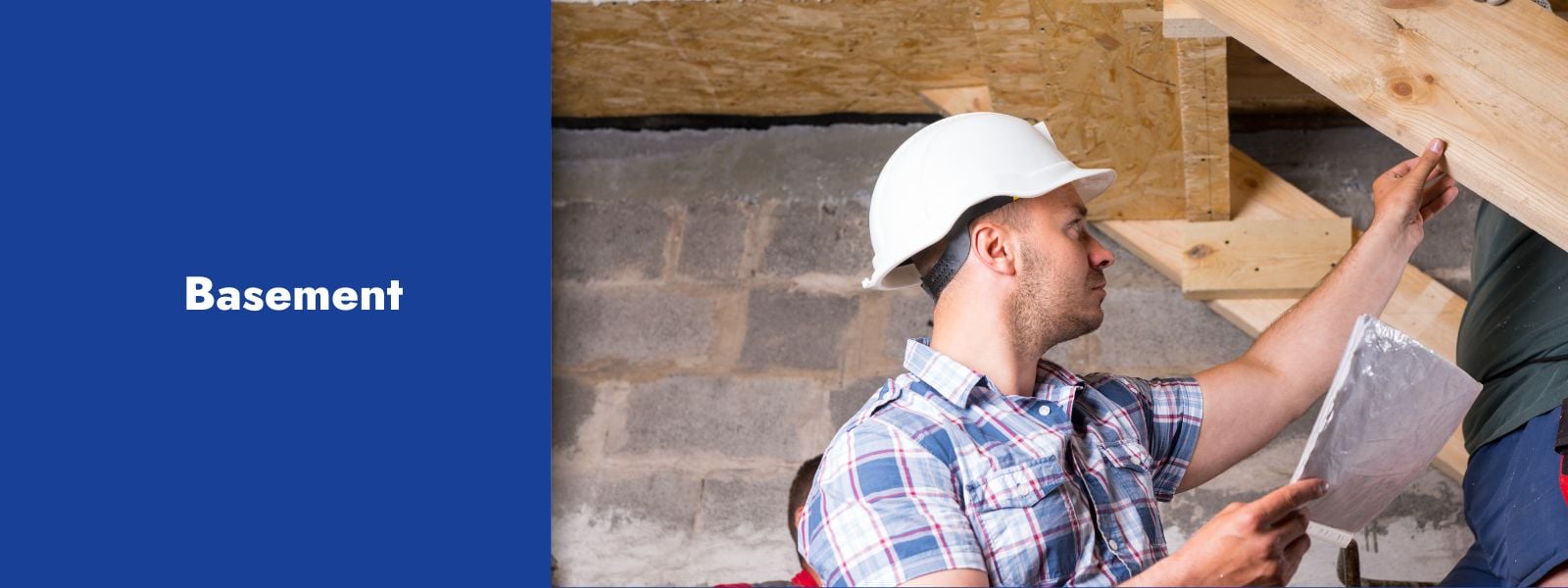
Basement
The basement is an area where potential problems can often hide. Inspectors are vigilant in identifying any signs of dampness, water seepage, or leaks. Detection is crucial because a wet basement can be a breeding ground for mold, mildew, and structural problems. It’s not uncommon for inspectors to use moisture meters to measure the level of dampness in various areas of the basement, providing buyers with precise data on potential issues.
Cracks in basement walls or the foundation are another active area of concern. These fissures can be caused by various factors, including settling, soil pressure, or water damage. Inspectors inspect the walls for any visible cracks and assess their severity.
Ventilation and proper airflow in the basement are points of inspection as well. An inadequately ventilated basement can lead to excessive humidity, which, over time, can result in mold growth and damage to stored belongings. Home inspectors assess the presence and functionality of vents and recommend improvements if needed.
The basement is a critical area of any home. Identifying issues allows buyers to make informed decisions and plan for potential repairs, ensuring their investment is sound and secure.
Common Issues and Costs:
Basement repairs can range from a few hundred dollars for minor waterproofing solutions to several thousand dollars for extensive foundation repairs or mold remediation.
- Basement moisture: Waterproofing a basement can cost between $3,000 to $10,000.
- Foundation wall cracks: Repair costs depend on the extent of damage but can range from $2,175 to $7,815 or more.

Attic
The attic isn’t just a place to store old belongings; it plays a significant role in a home’s ventilation and insulation. Inspectors evaluate the condition of the attic, looking for proper insulation, signs of leaks, and adequate ventilation. Inadequate insulation or signs of leaks are issues they actively look for.
The attic, often tucked away out of sight and out of mind, plays a pivotal role in a home’s overall well-being.
Home inspectors evaluate the level of insulation present. Proper insulation is vital for maintaining a comfortable indoor temperature and energy efficiency. Inspectors check for adequate coverage, ensuring that there are no gaps, thinning, or compression of insulation material. Inadequate insulation can lead to significant heat loss during winter and unwanted heat gain in summer, resulting in higher energy bills.
Inspectors also check the attic for signs of water damage or leaks. A leaky roof can lead to damp insulation, structural damage, and the development of mold or mildew. Active detection of these issues can prevent costly repairs down the line and maintain the structural integrity of the home.
Ventilation is another critical aspect of attic inspection. Proper attic ventilation helps regulate temperature and humidity levels, preventing the buildup of excessive heat and moisture. Inspectors check for the presence of vents and their condition, ensuring that they are unobstructed and functioning correctly.
Common Issues and Costs:
Addressing insulation issues in the attic, while not always a costly endeavor, can bring substantial energy savings over time. Attic-related repairs can range from a few hundred dollars for adding insulation to potentially several thousand dollars for addressing roof leaks or improving ventilation.
- Insufficient insulation: Adding insulation can cost between $1,500 to $3,500.
- Roof leaks: Repairing a roof leak might range from $360 to $1,550 or more.
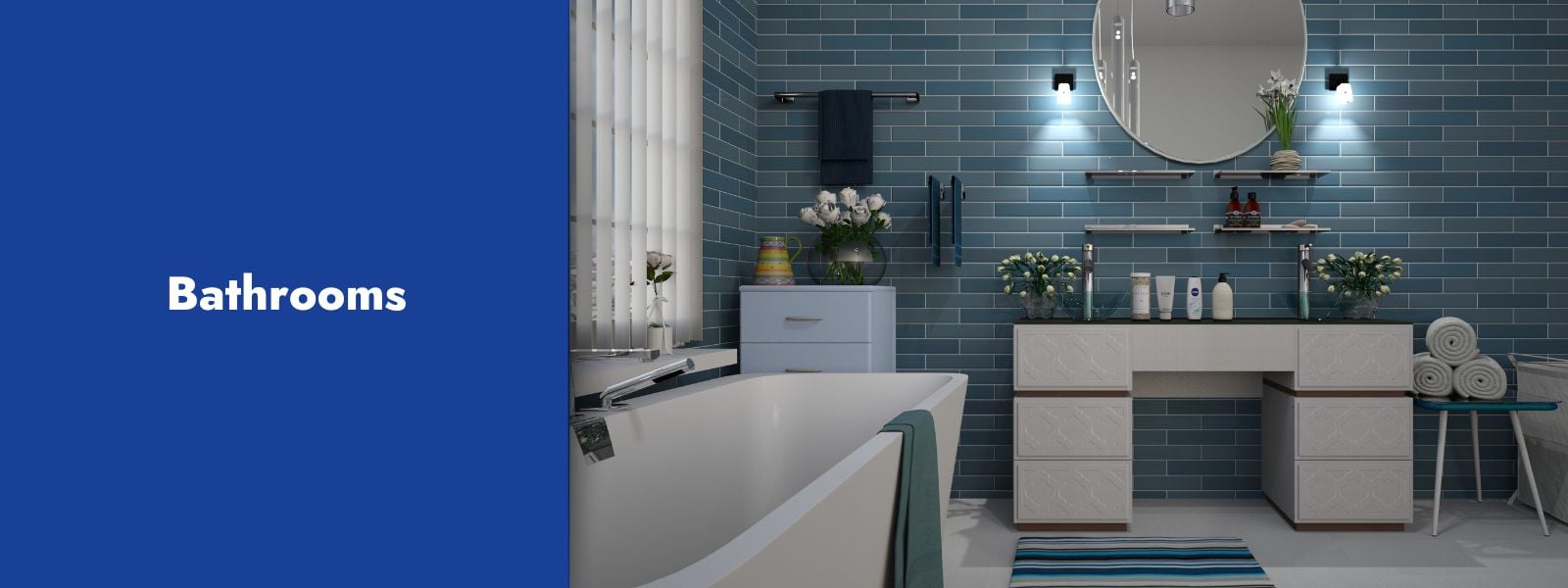
Bathrooms
Bathrooms are susceptible to various plumbing and water-related problems. They are critical areas of the home that can hide various problems. Inspectors examine plumbing fixtures, such as sinks, toilets, bathtubs, and showers, to ensure they are free from leaks and in proper working order. This approach helps identify issues like dripping faucets, running toilets, or slow drains that may not be immediately apparent to a casual observer. Early detection of plumbing problems can save potential buyers from costly repairs after moving in.
Tile and grout is also a focal point. Inspectors check for any signs of deterioration, cracks, or loose tiles, as these can indicate water damage or issues with the underlying structure. Evaluation of tile and grout can highlight potential areas for resealing or repairs.
Ventilation is essential to prevent moisture buildup, which can lead to mold and mildew growth. Inspectors assess exhaust fans and windows, ensuring they are functioning correctly and expelling humid air outside the home.
Another aspect of bathroom inspections involves evaluating the condition of caulking and seals around fixtures and in areas prone to moisture. Checking for deteriorated or missing caulking can reveal areas vulnerable to water intrusion, which can lead to costly damage over time.
The bathroom inspection is an active and thorough process, encompassing plumbing, tile, ventilation, seals, and electrical safety. Active detection of issues in these areas ensures that potential buyers have a complete understanding of the bathroom’s condition and can make informed decisions about any necessary repairs or improvements.
Common Issues and Costs:
Bathroom repairs can vary significantly, from minor fixes like replacing a leaky faucet (a few hundred dollars) to more extensive renovations, which can cost several thousand dollars or more.
- Leaky faucet: Repairing a leaky faucet typically costs between $200 to $330.
- Plumbing issues: Repair costs depend on the specific problem but can range from $175 to $4,000 depending on what needs to be repaired or replaced.

Kitchen
The kitchen, being the heart of any home, undergoes a rigorous inspection. Inspectors assess the condition and functionality of appliances in the kitchen. They actively check items like stoves, ovens, dishwashers, refrigerators, and microwaves to ensure they are in proper working order. Identifying malfunctioning appliances in the kitchen is essential for buyers, as repair or replacement costs can vary widely.
Plumbing in the kitchen is another focal point. Home inspectors inspect sinks, faucets, and drain lines, looking for leaks, proper drainage, and functional shut-off valves. Identification of plumbing issues can range from addressing minor leaks to more substantial repairs.
Electrical components in the kitchen are examined as well. This includes inspecting outlets and switches to ensure they are up to code and in safe working condition. Inspectors also scrutinize the condition of kitchen cabinets and countertops. They look for signs of wear and tear, damage, or structural issues.
Flooring in the kitchen is another area of inspection. Inspectors look for damaged tiles, signs of water damage, or any other issues that may affect the kitchen’s safety or aesthetics.
Ventilation in the kitchen is also evaluated. Inspectors check for the presence and functionality of exhaust fans or hoods, which are essential for removing cooking odors and moisture.
Detection of issues in these areas ensures that potential buyers have a complete understanding of the kitchen’s condition. This enables them to make informed decisions about any necessary repairs or improvements, factoring in costs and potential renovations.
Common Issues and Costs:
Kitchen repairs and renovations can range widely, from a few hundred dollars for minor fixes to several thousand dollars for appliance replacements or kitchen remodels.
- Malfunctioning dishwasher: Replacing a dishwasher can cost between $440 to $3,600 or more.
- Gas stove ventilation: Adding proper ventilation might cost around $400 to $1,500.
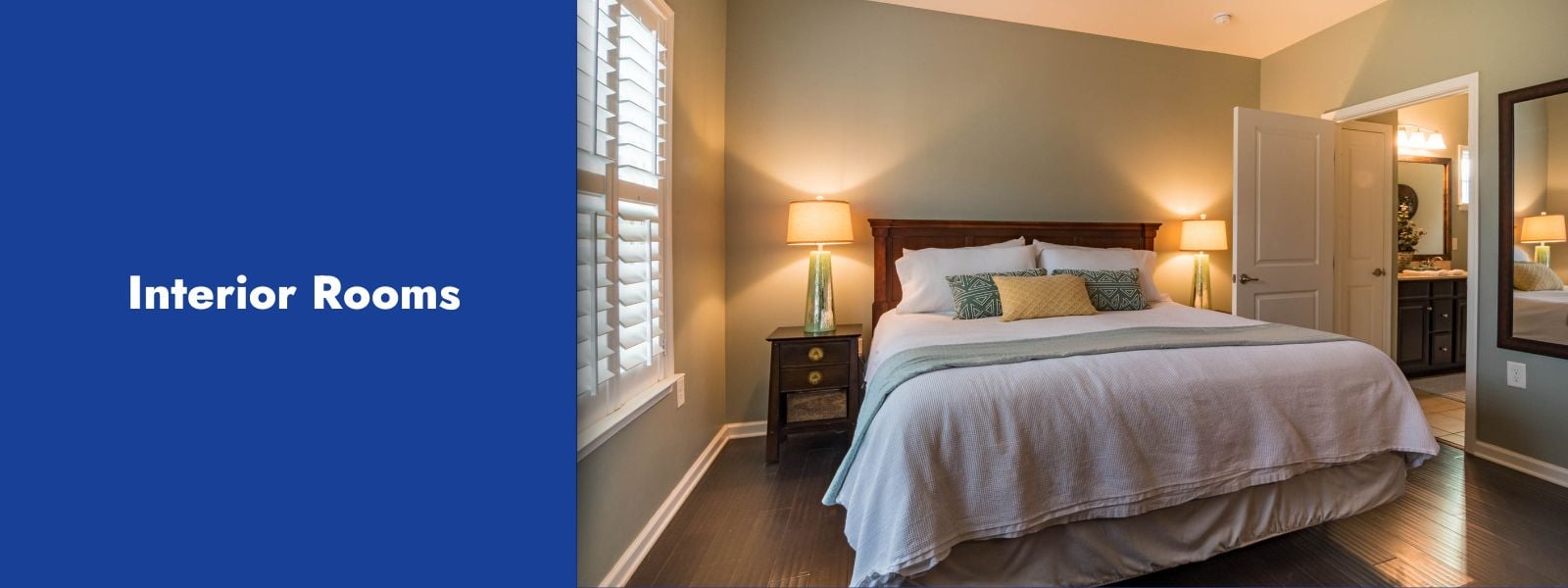
Interior Rooms
Inspecting the interior rooms of a home is a systematic process. Home inspectors navigate through each room to identify issues that may affect the property’s overall condition and livability. Inspectors look for visual clues that may indicate problems such as cracks or water stains on walls or ceilings. Examination of these signs allows inspectors to pinpoint areas that may require further investigation or repair.
Flooring in each room is inspected for signs of wear and tear, damaged tiles or hardwood, or signs of water damage. Identification of flooring problems is vital because it can affect both the safety and aesthetics of the space. Inspectors evaluate the functionality of lighting fixtures and electrical outlets in each room. They check for any visible issues, such as exposed wiring, loose outlets, or non-functional switches.
Closets are inspected for signs of water damage or structural issues, as they are often overlooked spaces but can reveal underlying problems. By actively inspecting each interior room, home inspectors provide potential buyers with a comprehensive understanding of the property’s condition.
Common Issues and Costs:
Costs for interior room repairs can vary depending on the extent of the damage, ranging from a few hundred dollars for minor cosmetic fixes to several thousand dollars for major structural repairs.
- Wall cracks: Repair costs can vary but generally range from $369 to $1,320 or more.
- Pest infestations: Exterminator fees depend on the type and extent of infestation, often ranging from $400 to $950 per year for general, full-service pest control.
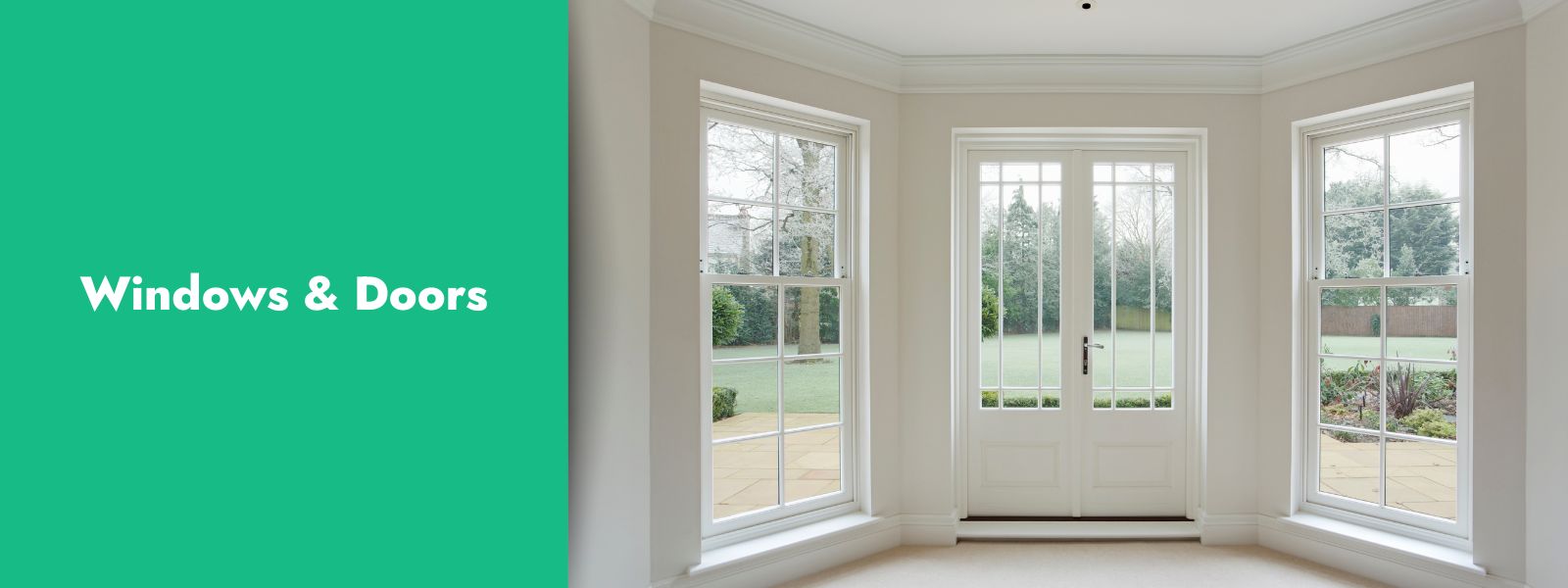
Windows & Doors
Windows and doors are crucial components of a home’s structural integrity, energy efficiency, and security. Home inspectors assess these elements in every room to identify any issues that may affect the property.
Inspectors check for drafts around windows and doors, which can compromise energy efficiency. They may employ methods such as using a smoke pencil or feeling for air leaks to pinpoint areas in need of sealing or weatherstripping.
Inspectors examine the condition of window and door frames, looking for signs of damage, rot, or decay. Identification of such issues is essential because it can indicate long-term water damage or structural problems.
Locks and latches on windows and doors are inspected for proper functioning. Ensuring that windows and doors can be securely closed and locked, contributes to the home’s safety and security. Inspectors assess the condition of glass panes in windows for any visible damage or cracks.
Common Issues and Costs:
Repairing or replacing windows and doors can range from a few hundred dollars for minor repairs to several thousand dollars for complete replacements, especially if energy-efficient upgrades are needed.
- Drafty windows or doors: Costs for sealing drafts can range from $600 to $2,300.
- Damaged windows: Replacement costs vary depending on size and material but can range from $234 to $1,224 per window.

Roof
The roof is one of the most critical components of a home, safeguarding it against the elements. Home inspectors engage in a thorough assessment of the roof’s condition, understanding that any issues here can have widespread consequences.
Inspectors check the roofing material, which can be asphalt shingles, tiles, metal, or other materials, for any signs of wear, damage, or missing pieces. Identification of damaged or missing roofing material is vital as it can lead to water infiltration, rot, and structural problems if left unaddressed. Additionally, inspectors assess the condition of flashing, which helps seal roof penetrations such as chimneys and vents. They look for any gaps or deterioration that may lead to leaks.
Gutters and downspouts are inspected to ensure that they are clear of debris and in good working order. Clogged or damaged gutters can lead to water overflow and damage to the roof, siding, and foundation, so identification of issues in this area is crucial.
Inspectors examine the roof’s overall structure, checking for signs of sagging or unevenness. Detection of structural issues can indicate more extensive problems that may require costly repairs.
Common Issues and Costs:
Roof repairs can range from a few hundred dollars for minor fixes to several thousand dollars for extensive repairs or a complete roof replacement.
- Roof repairs: Repairing damaged shingles or addressing minor leaks may cost between $360 to $1,550. A full roof replacement can range from $5,841 to $12,844 or all the way up to $46,000 on the high end.

Plumbing
The plumbing system is an essential and intricate network within a home. It’s responsible for supplying clean water and safely disposing of wastewater. Home inspectors conduct a comprehensive evaluation of the plumbing system to ensure it is in proper working order.
Inspectors inspect pipes to check for signs of leaks, corrosion, or damage. Detection of plumbing issues such as dripping pipes or rusted connections is crucial because even minor leaks can lead to water damage and mold growth over time.
Water pressure is evaluated in various fixtures throughout the house, including sinks, showers, and toilets. Testing helps inspectors identify potential problems with water supply, such as clogs or issues with the water pressure regulator.
Inspectors check the functionality of faucets and fixtures. They test for any leaks, loose handles, or issues with hot and cold water mixing.
Drainage systems are inspected, with inspectors checking for slow drains or backups in sinks, showers, and toilets.
Finally, the water heater is examined for proper functioning and potential issues. The water heater is checked for signs of rust or corrosion, assessing the temperature and pressure relief valve, and evaluating the overall condition of the unit.
Common Issues and Costs:
Plumbing repairs can vary widely, from a few hundred dollars for fixing minor leaks to several thousand dollars for replacing a water heater or addressing sewer line issues.
- Leaking pipes: Repairing pipe leaks can range from $150 for a minor fix to $1,500+for major repairs.
- Replacing a water heater: Costs can vary but may range from $960 to $3,910 or more.

Electrical System
The electrical system is a crucial aspect of any home. Inspectors examine the electrical panel, wiring, outlets, and switches for safety, functionality, and to identify potential hazards or issues.
The electrical system is the unseen powerhouse of a home, providing power to all our modern conveniences. Home inspectors engage in a detailed evaluation of the electrical system to ensure its safety and functionality.
Inspectors assess the electrical panel, which is the central hub of the home’s electrical distribution. They check for any signs of wear, damage, or overheating. Detection of issues with the electrical panel is critical as it can pose fire hazards and impact the entire electrical system’s performance.
Wiring is inspected throughout the home. Inspectors check for any exposed or damaged wiring, loose connections, or outdated materials. Identification of wiring issues is essential because faulty wiring can lead to power outages, electrical shocks, or even house fires.
Outlets and switches are tested for functionality and safety. Inspectors identify any non-working outlets, loose connections, or signs of overheating. Additionally, inspectors engage in the inspection of lighting fixtures and ceiling fans, ensuring that they are properly installed and functional. Ground Fault Circuit Interrupters (GFCIs) and Arc Fault Circuit Interrupters (AFCIs) are tested to ensure they provide the necessary protection against electrical shocks and fires.
Common Issues and Costs:
Electrical repairs can range from a few hundred dollars for minor fixes to several thousand dollars for rewiring or panel upgrades.
- Electrical panel upgrade: Costs vary but can range from $400 to $2,500+ depending on how many amps you’re upgrading.
- Fixing faulty outlets: Repair costs can range from $75 to $200.
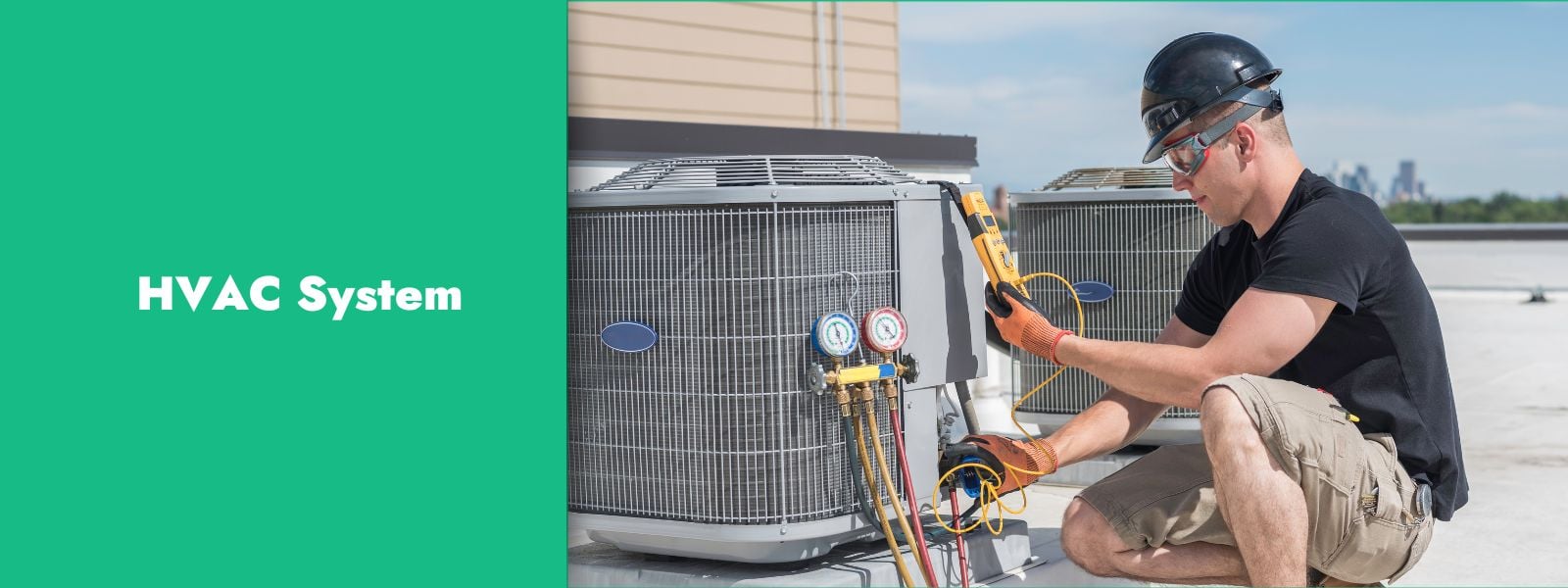
HVAC System
The heating, ventilation, and air conditioning (HVAC) system’s performance directly impacts comfort and energy efficiency. Inspectors evaluate the condition and functionality of the HVAC system, including the furnace, air conditioner, and ductwork to ensure they are in good working order.
The Heating, Ventilation, and Air Conditioning (HVAC) system is the backbone of a home’s climate control, regulating temperature and air quality. Home inspectors engage in a thorough assessment of the HVAC system to ensure it is functioning efficiently and safely.
Inspectors evaluate the condition and performance of the furnace or heating system. They check for signs of wear, damage, or corrosion and ensure that the system is producing heat as expected. Detection of issues with the heating system is essential, as it directly impacts the comfort of the home and potential energy costs.
Air conditioning units are also inspected. Inspectors assess the unit’s overall condition, including the compressor, condenser, and evaporator coils. Identification of issues with the AC system is crucial, as it affects the home’s cooling capacity and energy efficiency.
Ductwork, an integral part of the HVAC system, is examined for signs of damage, leaks, or blockages. Detection of ductwork issues helps ensure that conditioned air is distributed efficiently throughout the home, improving overall comfort and energy efficiency.
Common Issues and Costs:
HVAC repairs can vary significantly, from a few hundred dollars for minor fixes to several thousand dollars for replacing the entire system.
- Furnace or AC repairs: Repairing a furnace can range from $131 to $495, while it will cost between $150 to $650 for an AC repair.
- Duct cleaning: Costs typically range from $450 to $1,000.

Wrapping Up: What Home Inspectors Look For During Inspections?
In summary, a home inspection is an essential step in the home-buying process, actively uncovering the condition of a property’s various components.
The active participation of home inspectors in identifying issues and potential hazards provides invaluable information to prospective buyers.
Armed with this knowledge, buyers can make informed decisions about their potential investment, factoring in potential repair costs to their budget.
By addressing any problems uncovered during the inspection, buyers can avoid costly surprises in the future.
To learn more about buying a home or if you have questions that weren’t addressed in this post, give us a call at (817) 923-7321 or contact us.
Helen Painter Group Realtors is here to offer our knowledge and expertise to help facilitate your home-buying journey.
A long-standing and trusted Fort Worth real estate agency, we’ve been serving buyers and sellers since 1958.
With over six decades of success behind us, you’ll surely have peace of mind knowing your best interests are being represented throughout the home-selling process.

FAQs
How Long Do Home Inspections Take?
The duration of a home inspection can vary based on factors such as the property’s size and condition. Typically, a thorough inspection may take two to four hours. Larger or more complex properties may require additional time for a comprehensive evaluation.
How Much Does a Home Inspection Cost?
The cost of a home inspection is influenced by location and property size. On average, a standard home inspection can cost between $300 to $500. Additional services, such as radon or mold testing, can increase the overall cost.
Who Pays for the Home Inspection?
Generally, the buyer covers the cost of the home inspection as it is considered an essential expense to ensure they make an informed decision. However, in some cases, negotiations may lead to the seller sharing or covering the cost.
What Are the Most Common Problems Found During Home Inspections?
Common issues found during home inspections encompass roof damage, electrical problems, plumbing issues, HVAC system malfunctions, foundation concerns, water damage, and inadequate insulation or ventilation.
What Fixes Are Mandatory After a Home Inspection?
After a home inspection, buyers and sellers typically negotiate repairs or concessions. The extent of mandatory fixes varies based on local laws, purchase agreement terms, and the severity of the issues. Major safety concerns, such as faulty wiring or structural damage, often require attention, while less critical issues may be subject to negotiation between the parties involved. Active communication is key to reaching agreements on necessary repairs.

